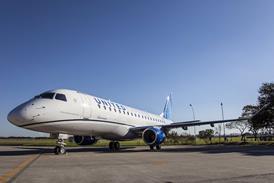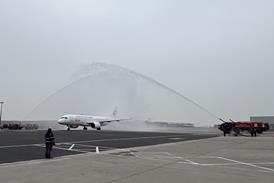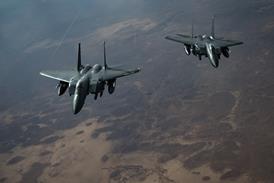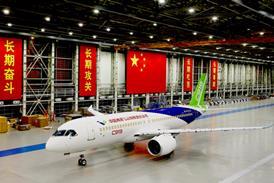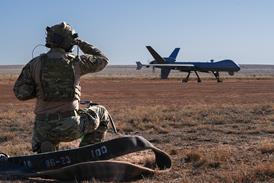Boeing says it expects its 787 will handle so like a 777, and the cockpit interfaces will be so similar and intuitive, that a five-day differences course and some time in a fixed-base, touchscreen simulator will suffice for converting 777 pilots to airline operations in the new aircraft.
Speaking at the UK Royal Aeronautical Society, Boeing's 787 training director Capt Al Nader revealed for the first time the company's training programme for the new aircraft that is being submitted to the US Federal Aviation Administration for approval.
 |
|---|
© Alteon (a Boeing affiliate) |
Nader says that Boeing is making a case to transfer 777 pilots to the 787 without training time in a level D full-flight simulator, but he admits the FAA may not agree to that.
Pilots from non-Boeing types would need a 20-day course to win their type rating, including time in a FFS, the company estimates, whereas pilots from Boeing types other than the 777 would need a 13-day course.
Nader says Boeing is flying a leased American Airlines 777 "wired up" to fly like the 787. This is being used to develop the 787 control software to ensure handling commonality between the two types is so similar as to make a common type rating possible.
Working with Boeing's training company Alteon, Nader says the company has already defined the pilot training requirements for the 787, and is close to finalising the syllabus - what it calls its pilot qualification plan. Meanwhile it is designing a computer-based training system that will make the whole training course paperless and fully interactive.
A key tool in Boeing's 787 training inventory is the Thales-built training suite used to prepare pilots for the simulator at a relatively low cost.
It consists of a flat-panel fixed-base simulator developed jointly by Thales and Boeing, but it is more than a procedures trainer because its flight and engine controls are physically the same as they will be in the aircraft.
As well as the systems being fully interactive via its touchscreen interfaces, the mechanical controls allow the simulator to be "flown" using a traditional Boeing control yoke, rudder pedals, power levers, flap and spoiler levers as they will be in the 787, and an autopilot mode control panel with conventional knobs and switches as planned for the 787.
The simulator includes Class 3 electronic flight bag displays outboard of each pilot's main flight displays.
The external visual display is limited, however, to a pair of small screens, one located above the cockpit coaming in front of each pilot's position. Boeing concedes that these are really intended only to enable pilots to train for the head-up display that will be standard on 787s. But this is the machine from which Boeing hopes 777 pilots can graduate direct onto the 787 in line service.
Thales's market director civil simulation Mark Dransfield says more than 80% of the software in its simulator is the same as in the aeroplane itself and the full flight simulator, with software updates being only about three days behind the latest developments for the real aircraft.
Alteon says Boeing already has a Thales 787 FFS at Seattle, which is being developed in parallel with the aircraft's preparation for its test flying programme, and will deploy a second to its training base at Miami complete with the full pilot qualification plan suite by 2010.
Read Learmount's blog: Boeing pushing boundaries
Source: Flight International

